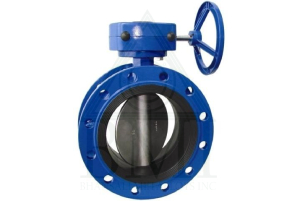How to Identify Different Types of Valves
Valves are an essential component of countless systems and processes in various industries, including manufacturing, petrochemical, plumbing, and more. They control the flow of fluids, gases, or even solids, making them crucial for maintaining the integrity and efficiency of these systems. To understand and work with valves effectively, it’s essential to be able to identify and differentiate between various valve types. In this blog, we will explore the key methods to identify different types of valves and understand their unique characteristics.
1. Visual Inspection
Visual inspection is often the first step in identifying a valve. This involves observing the valve’s external features and components, which can provide valuable clues about its type and purpose. Here are some visual characteristics to look for:
a. Valve Shape: Valves come in various shapes, such as globe, gate, ball, butterfly, plug, and diaphragm valves. Each type has a distinct form that can help in identification.
b. Body Material: Valves can be made from materials like metal, plastic, or ceramic. The body material can indicate the valve’s application and suitability for specific environments.
c. Port Configuration: Examining the number of ports (inlet and outlet connections) and their arrangement, such as two-way, three-way, or multiport valves, can give you an idea of its functionality.
d. Actuator Type: Valves may have different types of actuators, including manual handwheels, levers, electric motors, or pneumatic/hydraulic actuators. The actuator type can help in identifying the valve’s control mechanism.
2. Valve Markings
Valves are often labeled or marked with information that helps in their identification. The markings may include:
a. Manufacturer’s Name and Logo: The manufacturer’s name and logo are typically engraved or stamped on the valve body.
b. Valve Type and Size: Valves are usually marked with their type (e.g., gate, ball, globe) and size (e.g., 2 inches, 3/4 inch) for easy identification.
c. Pressure and Temperature Ratings: Valves are rated for specific pressure and temperature ranges. These ratings are essential for selecting the right valve for a given application.
d. Material Specification: The valve’s body material, trim materials, and any relevant certifications can be found on the valve’s markings.
e. Flow Direction: Some valves are labeled with arrows indicating the direction of flow, helping operators ensure proper installation.
3. Operational Characteristics
Understanding the operational characteristics of a valve can be instrumental in its identification. Consider the following aspects:
a. Function: Know the purpose of the valve – whether it’s for on/off control, throttling, diverting, or mixing.
b. Operating Mechanism: Identify how the valve is operated – manually, electrically, pneumatically, or hydraulically.
c. Flow Control: Observe how the valve regulates flow – whether it uses a rotating disc, a sliding gate, or a ball mechanism.
d. Sealing Mechanism: Valves can have different sealing mechanisms, such as globe valves with a plug-type disc and gate valves with a sliding gate. Understanding these mechanisms is key to valve identification.
4. Application Context
Valves are often used in specific applications or industries, and this context can help you identify them. Consider the following:
a. Location: Is the valve part of a residential plumbing system, an industrial chemical plant, a power generation facility, or a petrochemical refinery? The location can provide critical context.
b. Process Media: Identify the fluid or gas that the valve is controlling, as different valves are designed for specific media.
c. Environmental Conditions: Consider the environmental conditions, such as temperature, pressure, and corrosive factors, as they can influence the valve’s material and design.


Conclusion
Identifying valves can be a straightforward process with the right knowledge and attention to detail. Visual inspection, valve markings, understanding operational characteristics, and considering the application context are all valuable techniques for identifying different types of valves. Accurate valve identification is essential for proper maintenance, repair, and selection of valves in various industries, ensuring the efficient and safe operation of systems and processes.
Bhansali Metalloys Inc is one of the leading Manufacturer, Exporters, and Suppliers of High Quality Valves all over in India. We are Manufacturer, Supplier and Dealer of various types of Fasteners such as Bolts, Nuts, Screws, Washers, Threaded Rods and many more. We are Valves Manufacturer in India. These Fasteners are available in different grades and materials. We are Valves Manufacturer, Supplier, Dealer, and Exporter in India. We are Valves Supplier in India. Contact Us +919152160158 or email to info@bhansalimetalloysinc.com for Valves price list.
For our full list of products that we offer check out our website here. Be sure to join the conversation in our Facebook, Instagram, Twitter, LinkedIn Group.
Each Valves is otherwise designed based on the characteristics of the applying and additionally the pressure. Consequently, different industries use different Valves. We also produce customized Valves Products at our factory as per our client’s requirements. For any types of Valves Price List Call on +91 9152160158 or drop an Email to info@bhansalimetalloysinc.com | exportbmi32@gmail.com
We Export Across the Globe
Exports in Asia Afghanistan, Armenia, Azerbaijan, Bangladesh, Bhutan, Brunei Darussalam, Cambodia, China, Georgia, Hong Kong, India, Indonesia, Japan, Kazakhstan, South Korea, Kyrgyzstan, Laos, Macao, Malaysia, Maldives, Mongolia, Myanmar (ex-Burma), Nepal, Pakistan, Phillipines, Singapore, Sri Lanka (ex-Ceilan), Taiwan, Tajikistan, Thailand, Timor Leste (West), Turkmenistan, Uzbekistan, Vietnam.
Export to Africa Burundi, Comoros, Djibouti, Eritrea, Ethiopia, Kenya, Madagascar, Malawi, Mauritius, Mayotte, Mozambique, Reunion, Rwanda, Seychelles, Somalia, Tanzania, United Republic of Uganda, Zambia, Zimbabwe, Angola, Cameroon, Central African Republic, Chad, Congo (Brazzaville), Congo, Democratic Republic of the Equatorial Guinea, Gabon, Sao Tome and Principe, Algeria, Egypt, Libyan Arab Jamahiriya, Morroco, South Sudan, Sudan, Tunisia, Western Sahara, Botswana, Lesotho, Namibia, South Africa, Swaziland, Benin, Burkina Faso, Cape Verde, Cote d’Ivoire (Ivory Coast), Gambia, Ghana, Guinea, Guinea-Bissau, Liberia, Mali, Mauritania, Niger, Nigeria, Saint Helena, Senegal, Sierra Leone, Togo.
Export to America Anguilla, Antigua and Barbuda, Aruba, Bahamas, Barbados, Bonaire, Saint Eustatius and Saba, British Virgin Islands, Cayman Islands, Cuba, Curaçao, Dominica, Dominican Republic, Grenada, Guadeloupe, Haiti, Jamaica, Martinique, Monserrat, Puerto Rico, Saint-Barthélemy, St. Kitts and Nevis, Saint Lucia, Saint Martin, Saint Vincent and the Grenadines, Sint Maarten, Trinidad and Tobago, Turks and Caicos Islands, Virgin Islands (US), Belize, Costa Rica, El Salvador, Guatemala, Honduras, Mexico, Nicaragua, Panama, Argentina, Bolivia, Brazil, Chile, Colombia, Ecuador, Falkland Islands (Malvinas), French Guiana, Guyana, Paraguay, Peru, Suriname, Uruguay, Venezuela, Bermuda, Canada, Greenland, Saint Pierre and Miquelon, United States.
Export to the Middle East Bahrain, Iraq, Iran, Israel, Jordan, Kuwait, Lebanon, Oman, Palestine, Qatar, Saudi Arabia, Syria, United Arab Emirates, Yemen.




